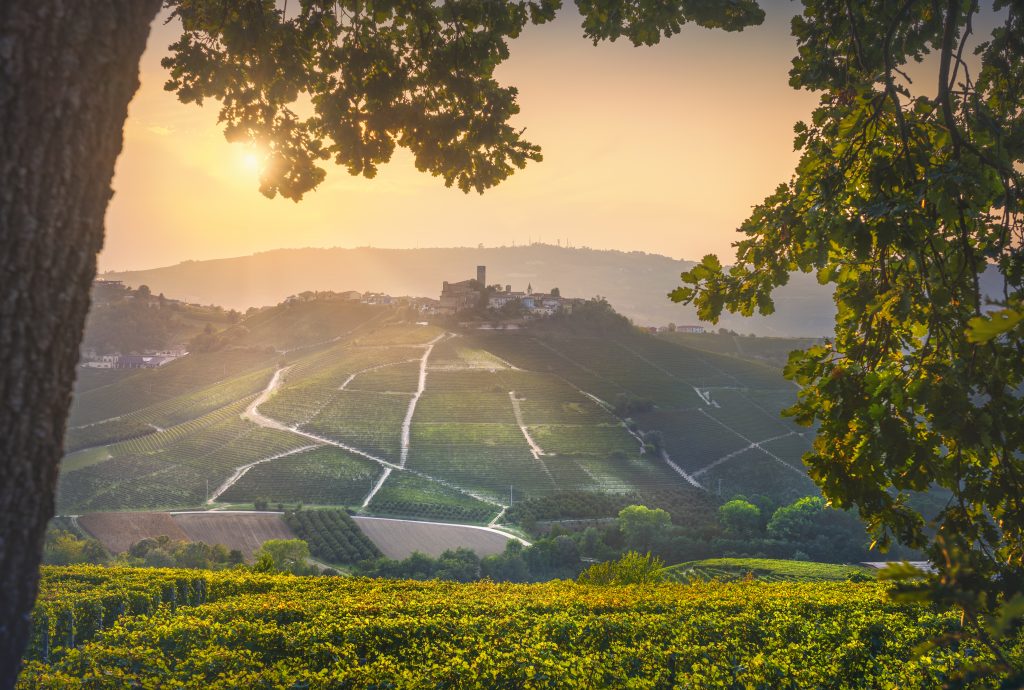This website uses cookies so that we can provide you with the best user experience possible. Cookie information is stored in your browser and performs functions such as recognising you when you return to our website and helping our team to understand which sections of the website you find most interesting and useful.
Will the strong 2019 harvest kick-start renewed vigour in Piedmont?
Piedmont has seen some healthy growth in the last year, but nothing to write home about. Will the advent of the soon to be released 2019 vintage prove just the catalyst the region needs?

Speaking exclusively to db, the CEO of Bordeaux Index’s LiveTrade platform, Matthew O’Connell, said there had been a big jump in the prices of traditional producers such as Rinaldi, Conterno and Bartolo Mascarello during 2019 when the 2016 vintage was released, due the “buzz around the 2016”. Since then, Piedmont has remained relatively static on the secondary market both in terms of demand and increased prices. Last year was “healthy” he notes – with the region enjoying growth of 9%, similar to that of the Super Tuscans, but well below the runaway prices of say Burgundy or Champagne.
However, he believes this could soon change, given the “very strong” 2019 vintage that is due to hit the market – a particularly welcome boost after the “uneven” 2018.
“2019 is clearly a five-star vintage for Piedmont, and the wines got obviously excellent critical reviews,” he said. He points to Antoni Galloni of Vinous‘ verdict of the 2019 as a “stellar vintage that could very well represent the beginning of a new cycle of strong, outstanding years”.
A strong vintage can often recharge interest in a region and prompt people to reassess the wines already in their collection from that region, O’Connell argues.
It makes people potentially buy from a region that they might not have done before he notes. “Sometimes it just tilts the balance in the right direction.”
And the 2019 is “definitely a vintage of the sort of quality that will grab people’s attention”, a “benchmark vintage” that could inject some vigour into the market for Piedmont.
The likely winners of this potential reassessment are the most established names and classical styles that garnered high praise from critics like Galloni, such as Rinaldi, Vietti, Sandrone, Vajra, Burlotto, and Conterno.
Although he agrees that Piedmont has “moved beyond modern versus traditional” the more classical wines are broadly on-trend with what the wine market is looking for “Terroir, transparency, and character of the region”, he points out.
Currently, the most traded Piedmont vintages are the 2013 and the “excellent” 2016, followed by 2014.
2016 is known as a “definitive vintage” with wines that scored very highly, with the result that some of them have a premium attached, whereas the 2013 appears to offer better value he explained. “People have seen 2013 as a top vintage which perhaps represents slightly better relative value,” he said.
Bordeaux Index’s most traded wines from Piedmont in the last year were Giacomo Conterno Monfortino, Giacosa and Gaja – Barolo Sperss Gaja 2013 (a Nebbiolo wine from Serralunga in the Langhe region) rose 39% last year, ahead of Giacomo Conterno Monfortino 2013, up 26% last year, while 2013 also rose by 24% – all three well ahead of the region’s overall 9% increase.
Barolo and Barbaresco remain the kings of Piedmont, but there are some notable examples to be found elsewhere. He points to the “increasingly desirable” Nervi-Conterno Gattinara as well as Arpepe in Valtellina, in neighbouring Lombardy which is producing “really interesting” high altitude Nebbiolo that can be hard to get hold of.
However O’Connell is cautious about whether the success of Barolo and Barbaresco – even on the back of the strong 2019 vintage – will cast a halo effect over some of Piedmont’s other wines such as Barbera d’Alba or Barbera del Monferrato Superiore, or even its lesser known grape varieties?
“Sometimes there is room for some new entrants into the space even from outside the Barolo or Barbaresco wines” he explains, but argues that wines made from Barbera, Dolcetto or Freisa (an ancient variety that is a possible wilder parent of Nebbiolo) are examples of wines that represent interesting quality value for drinking, rather than for investment.
“There are some great Barbera but do I think Barbera can become kind of investment grade or top collector type wines? Unlikely,” he says, for although they offer very interesting value as drinking wines that can hold their own, and many are from top producers “they’re simply not in the same category” as some of the topflight Barolo and Barbaresco.
So where is this interest coming from?
O’Connell explains that historically, UK collectors had made up more than half of the interest in Piedmont, but that now UK collectors accounted for around a third, and although Asia wasn’t quite there yet, it was “heading up” to a third.
“I think it’s significant,” he said. “Sales in Asia have grown by 20 or 25% in each of the last three years, obviously is a broad growth in Piedmont across buyer regions but on balance the growth stronger in Asia.”
Asia has also proved to be a “significant market” for Burgundy, and O’Connell explains that Piedmont “maybe ticks some of the same boxes”– small production from a specific grape, producing wines that are terroir focused, from small plots. It even has a similar arrangement in terms of Crus and different producers having multiple sites.
“Obviously Nebbiolo and Pinot Noir are very different but there is some read across between them, they can be particularly pretty and unique wines,” he muses.
This, he feels, bodes well for Piedmont. With the strong 2019 vintage – and potentially subsequent vintages – coming on stream soon, this is likely to energise this dynamic even further.
Related news
Bourgogne wine see global growth despite difficult market conditions

